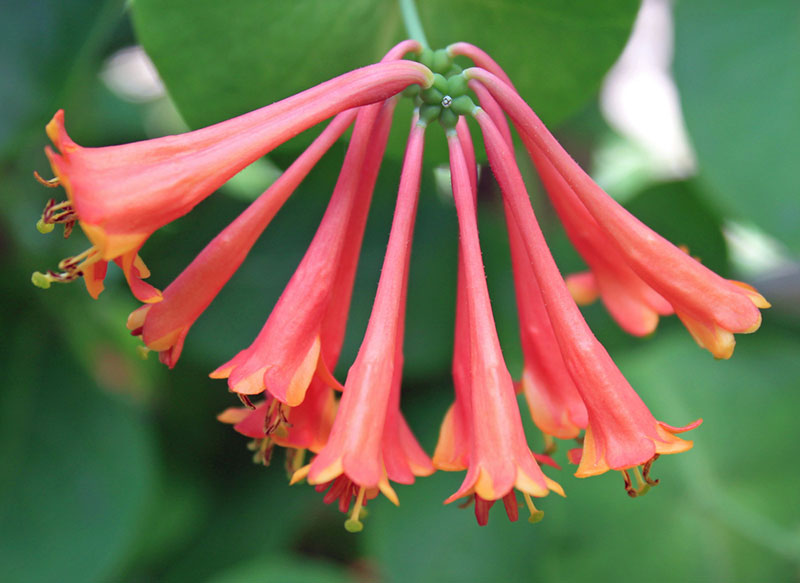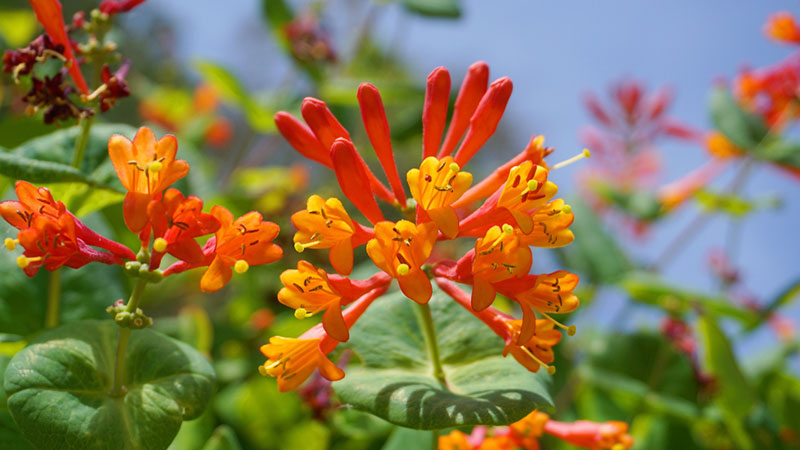Coral honeysuckle is a hardy plant that can be grown everywhere from zones 4 through 11 and is versatile in its usages. It grows as a vine, so it can be trained to climb trellises and fences. Absent from those, it can be grown as a shrub or even as ground cover with regular pruning.
The flowers come in bright red as well as yellow varieties, and it has a pretty, papery bark.
Because coral honeysuckle isn’t too picky about its soil, sun exposure, or its water levels, it’s an easy plant to grow under most conditions. It can be grown from cuttings, giving your new plant a head start on the growing season.
Light and Temperature Requirements
The temperature differences between zones 4 and 11 are great, and these temperatures are all tolerated by this plant. It is highly heat tolerant and can withstand virtually all temperatures present in the continental United States and even parts of Canada. It also prefers full sun, blooming at its best in this setup, but it also tolerates partial shade.
As long as the plant has access to sun, even if it isn’t always direct, it will grow and bloom.
Water
Coral honeysuckle is considered a drought-tolerant plant. It can go through lean times waterwise and continue to grow and thrive. It can be watered regularly or not in most climates. But like many plants, frequent waterings are preferred to keep it healthy.
It should be regularly watered when the plant is young and/or trying to become established.
It does best when it gets about 1 inch of rain every week or the equivalent from watering. Unless you live in a drought-prone region, the occasional rain is likely enough to keep the established plant going.

Soil
Coral honeysuckle likes soil that is slightly acidic, so the occasional fertilizing with an acidic mixture can be helpful for maintaining strong stems and blooms.
It likes soil to be well-drained, and sandy soils tend to have the best drainage for it. Mixing a little sand into the soil can help to keep it happier.
A good organic mulch can be used to keep more moisture in the soil as well as to keep it warmer during the colder months. Mulch will also keep weeds from sprouting around the honeysuckle.
Training the Vines
Each stem can grow to be as long as 25 feet, so it may need pruning, depending on what you’re using the plant for. It’s a great plant for climbing a trellis or a gazebo with its long, brightly flowering vines.
To get it started climbing, the new, young vines should be physically placed on the object to be climbed once they are long enough to start climbing. This will likely need to be repeated with each vine until it is strong enough to grasp the object and hold itself on. Alternatively, you can tie the vine to the object with a loose string to keep it there long enough to get a good grasp.
Low Maintenance
This is a plant that largely likes to be left alone. It does not have any specific pests that go after it, so it won’t need any insecticides. The most it needs in terms of care is pruning if you want shorter vines and the removal of weeds when the plant is young and becoming established.




